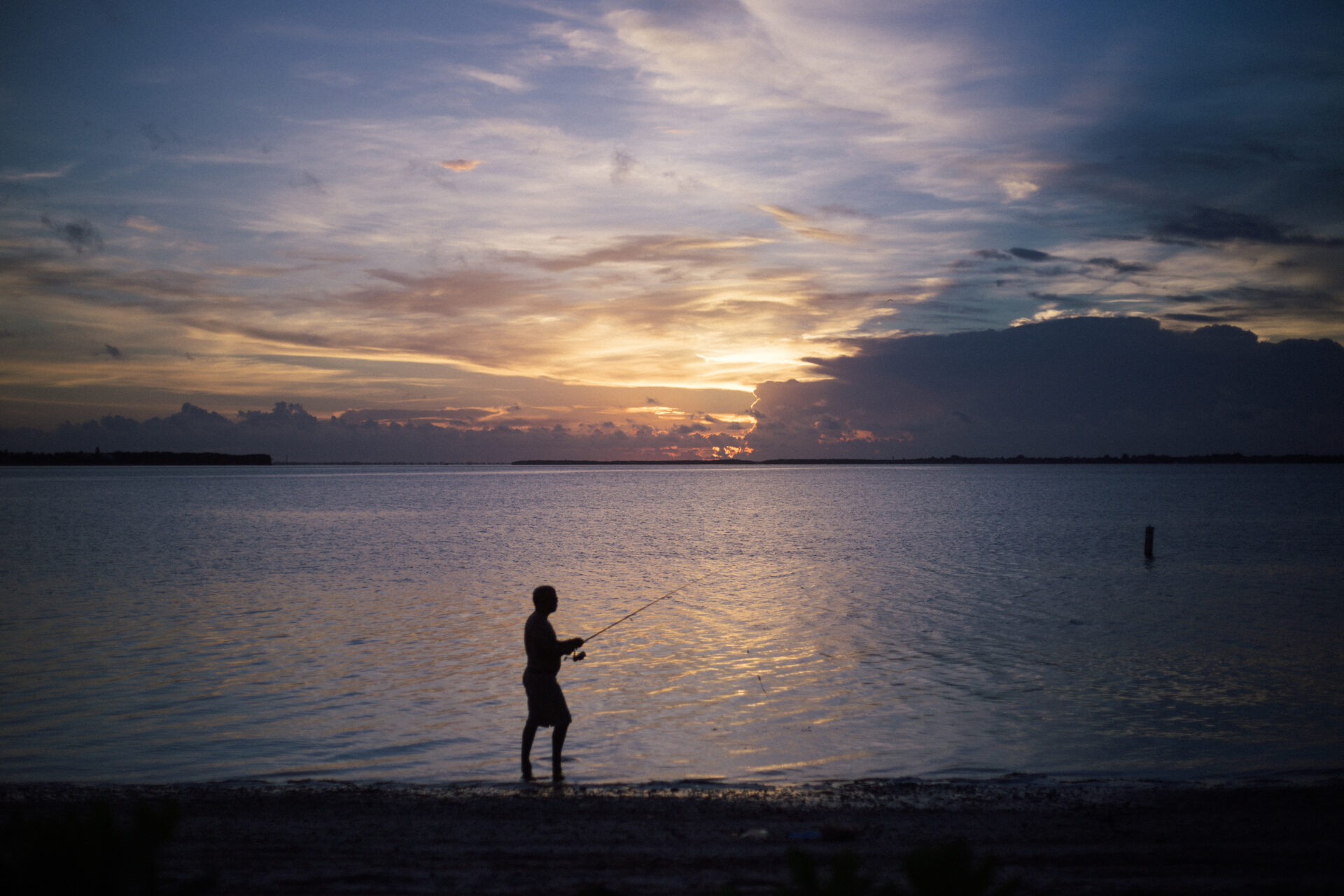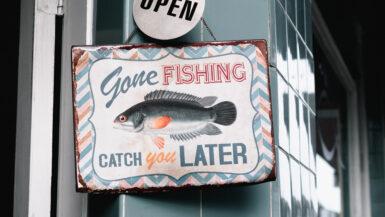Fishing for trout in small, mountain streams is an exciting challenge for many anglers. Not only does it offer the opportunity to catch beautiful and delicious fish, but it also offers the chance to venture into beautiful and scenic regions. Whether you’re a first-time trout fisherman or a seasoned pro, fishing for trout in small streams can be extremely rewarding. In this article, we’ll look at some of the tips and tricks you need to know in order to be successful.
Equipment
Fishing for trout in small streams requires specific gear due to their shallow water and narrow channels. There are four primary pieces of equipment that are essential for an enjoyable and successful fishing experience.
Light Weight Rod and Reel
A light-weight rod and reel that can cast delicate lures or baits is essential for trout fishing in small streams. Look for a rod no longer than 7 or 8 feet in length with a light action, a reel that handles 4-8 pound test line, and a line weight of 4-12 pounds. Opt for a spinning reel, as these are much easier to cast than baitcasting reels.
Lures and Baits
Trout are attracted to small lures and baits such as worms, larvae, flies, and nymphs. Bring a variety of lures and baits to the stream, as different types of trout will respond to different offerings.
Hook Sharpener
It is important to keep your hooks sharp and ready for use. Bring a hook sharpener with you to the stream to ensure that your baits and lures are always ready to go.
Protective Clothing
Protective clothing such as waders, boots, and a hat are important for keeping you warm, dry, and safe while you are in the stream. Waders will keep you dry and can also provide extra insulation and protection against sharp rocks. Boots will keep your feet safe and give you better traction when you are in the stream. A hat can help protect you from the sun and also keep your head warm when the temperatures drop.
Tips for Fishing Small Streams
Small streams are typically shallow with varying depths. Casting lures or flies too deep into the water could cause the trout to spook, so stick to the shallower areas. Wading can be a great way to reach them, but it is important to be careful not to startle the trout. Stick to the shallow edges of the stream and use the current to lure the trout upstream.
Know the Hatch
Successful fishing in small streams requires a knowledge of the type of aquatic insects that hatch in the stream. Trout feed on these larvae and become much easier to catch when they are actively feeding. Match the hatch, by flying or spinning a lure that resembles the type of aquatic insect that is in the stream to attract the trout for an easier catch.
Use Small Lures
When fishing for trout in small streams, it is important to use a small lure or fly that won’t startle the fish. Try using small spinners, in-line spinners, spoons, or small artificial lures. Larger lures can be used, but they may be too heavy to cast in the stream and may also be too loud to attract the trout.
Cast Upstream
When fishing in a small stream, always make your cast upstream. This allows the lure or fly to drift naturally down the stream in front of the trout. When fishing downstream, the trout are more likely to be spooked by the noise created by the lure. Try to make your casts as quiet as possible and keep a close eye on the line to spot any movement.
Change Techniques
If one technique is not working, try changing techniques to find a more successful approach. Trout can be picky eaters, so changing the color, size, or type of lure or fly can make all the difference. Don’t be afraid to experiment with different techniques to find what works best in a particular stream.
Location
Small streams provide some of the most challenging and rewarding opportunities for trout fishing. To make the most of the experience, it is essential to find the best locations. When selecting a stream for trout fishing, some important characteristics to consider include:
Water Temperature
Water temperature affects the behavior of trout. Trout can be found in areas of a small stream where temperatures range from 55 to 70 degrees Fahrenheit. In areas where the temperature is too cold, trout may not be present.
Cover and Structure
Look for areas of the stream with plenty of cover such as overhanging vegetation, logs, and rocks. Trout like to hide in these areas. Structure also provides a great place to fish. Look for pools, eddies, and deep pockets where trout will often congregate.
Insect Activity
Insect activity is a good indicator of where trout may be located. Keep an eye out for mayflies, caddisflies, and stoneflies. These insects are trout’s natural food source and can attract them to certain areas of a small stream.
Tidal Influences
If the stream is located near an ocean, watch for fluctuations in the water level and temperature due to tides. Tracker the tides for the best chance of finding trout in that particular stream.
Once these conditions are taken into consideration, it will be easier to locate the ideal spot for trout fishing in a small stream. With a little patience, anglers can find some of the most rewarding spots for trout in these waters.
Best Practices
When fishing for trout in small streams, it is best to stay away from large rivers and streams. Smaller streams generally offer more protection to the trout, and are easier to wade and navigate. The currents are usually less strong, making them much easier to manage, and the shallow waters enable fishermen to cast further and more accurately.
Choose the Right Gear
The right gear can make all the difference when fishing for trout. Select light spinning or fly tackle to easily present a small lure or fly to the trout in the stream. It is also important to wear clothing appropriate for the environment, such as waders or wading boots. Stay mindful of the tackle you bring with you, as small streams necessitate a more minimalistic approach, with only a few lures being necessary.
Look for Trout Habitats
Look for areas in the stream where the trout are most likely to be. Usually, trout will linger around weed beds, fallen logs, and rocks, staying out of the direct current of the water. Pay special attention to areas of the bank that provide access to food, such as insects, and areas of cover.
Fish with Patience
Trout in small streams are usually quite wary, and will be spooked easily. It is important to move slowly and stay as stealthy as possible. When presenting the lure or fly, it is best to do so with a slow, light motion, and to pause in between casts. Waiting a few seconds between casts can sometimes be enough to entice the trout to take the bait.
Work the Water Thoroughly
Regardless of the trout’s behavior, it is important to be persistent and to systematically move along the stream to ensure the entire area is fished thoroughly. Explore every nook and cranny, as the trout may be hiding in unexpected places. Spend some time observing the water and the surroundings, and keep an eye out for signs of activity that may indicate the presence of trout.
Techniques
Fishing for trout in small streams can be both challenging and rewarding. To be successful when fishing for trout, it’s important to be prepared by knowing the best techniques to use. Before you hit the water, it’s important that you understand the gear and equipment you need, the most effective baits to use, and the type of environment and water conditions trout prefer.
Gear and Equipment
When trout fishing in small streams, the right gear and equipment can make the difference between a successful day and an unsuccessful one. Fishing in small streams often requires a smaller rod and reel, as well as a smaller line. A two- to four-pound test line is ideal. Additionally, you’ll need smaller lures, such as spinners, lightweight jigs, and wet flies. It’s also important to have an assortment of sinkers and split shot for weighting lures and baits. And, don’t forget a net to help you land the big ones.
Bait Selection
When trout fishing in small streams, bait selection will be a key factor in success. Small streams are often home to more natural bait, such as worms, insects, and larvae. Live bait is a great option because trout naturally eat these items. Another great bait option is small spinners or crank baits, which can mimic the motion of baitfish and entice trout.
Environmental Conditions
When trout fishing in small streams, it’s important to understand the environmental conditions that trout prefer. Trout thrive in cold, clear, and clean water. Oftentimes, these small streams are home to cooler temperatures and fewer pollutants, providing an ideal habitat for trout. Additionally, it’s important to pay attention to the current. Trout are attracted to currents that are both slow and steady, as this mimics their natural habitat.
Fishing Techniques for Trout in Small Streams
Fishing for trout in small streams requires specific techniques if you’re looking for success. The most effective technique is to cast upstream and allow your bait to drift downstream with the current. This technique mimics the action of food drifting downstream and is more likely to entice trout. Another effective technique is to use a slow retrieve when fishing with lures, such as spinners and crank baits. This mimics the action of baitfish, which trout feed on. Lastly, if using live bait, try to remain still and allow your bait to remain in one spot to increase your chances of catching a trout.
In Summary
Successfully fishing for trout in small streams requires an understanding of the best gear and equipment to use, the most effective baits, and the type of environment and water conditions they prefer. To be successful, it’s important to use the right gear, choose the right baits, and pay attention to the environmental conditions. Additionally, trout fishing in small streams often requires specific techniques, such as casting upstream, using a slow retrieve, or allowing the bait to remain in one spot. With the right preparation and knowledge, you’ll be sure to catch the big one.
Technique for Successful Trout Fishing
Fishing for trout in small streams doesn’t have to be tricky; with some patience, practice and the right technique, anglers can land their desired catch. First, you’ll want to choose the right type of reel and rod for the type of trout you plan to pursue. Then, move slower when in the streams to avoid spooking any potential trout. If you are using a fly rod, use a long leader and light tippet to prevent the trout from seeing your line. Once you cast, be sure to use long strips to give the fly time to move through the water column. Lastly, make sure to use the right type of bait, such as mealworms and corn, which are some of the most popular choices for trout. With these tips, you’ll be sure to have a successful and enjoyable day out trout fishing!





Leave a reply